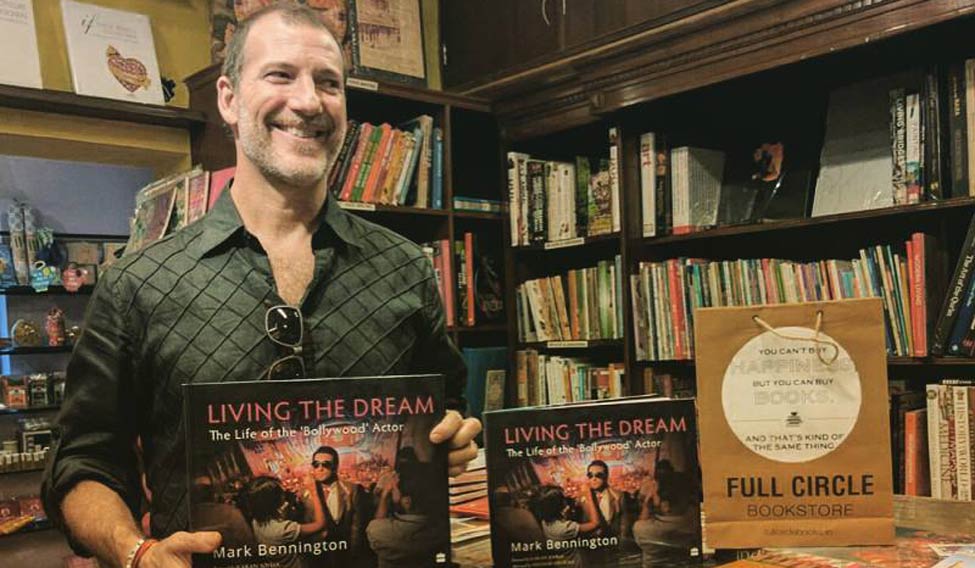American photographer Mark Bennington tried his hand at acting in Bollywood with two films to his credit, including Dibakar Banerjee's Detective Byomkesh Bakshy!. The trained actor from New York recently brought out a coffee table book, Living The Dream: Life of the 'Bollywood' Actor, with a foreword by filmmaker Karan Johar. True to his first love, which is photography, the project is a collection of 112 pictures of Indian stars in candid moments, with short interviews. He spoke to THE WEEK about the book and his next project, also set in Mumbai and to be released in 2018.
At what point did you get interested in photographing Bollywood stars?
This project was not born out of a long-standing fascination with Bollywood but rather out of an interest in capturing the lives of actors. It just so happened that I was in India for the first time in 2010 and by serendipity, found myself in Bandra and met filmmaker Guneet Monga. She introduced me to about 20 actors in the first week. I returned to the US to turn this project into a book, and with the help of casting director Shanoo Sharma, it happened.
Could you pick out some memorable images from the collection and tell us why you like them?
I love the image of Vijay Raaz because it was the culmination of three and a half months of calls and texts in order to get a meeting with him. Many of these stars are busy but sometimes the character actors are the busiest because they’re doing multiple films in multiple countries all over the world and all the time. I also love the image of Dev Anand because it was one of the last images taken of him. It was a special meeting that I had with him in which he was giving me advice about my own career as an artist… he radiated positive energy. And I love the image of Pooja Verma, the TV actress, in the dressing room, for its aesthetics and rawness.
As a non-Indian capturing Bollywood from up close, what were your takeaways?
I learnt that an item number can have nothing to do with the plot of the film. I learnt that playback singers are actually singing the songs. I learnt that there are rarely contracts involved with actors signing a project. Things are done on a handshake and that, generally, the business is run on the politics of relationships as opposed to in the states where things are run on more formal terms. And that Bollywood functions as one big family whether it’s dysfunctional or running like a smooth machine. It ebbs and flows.
In what ways is the life of a Bollywood star different from a Hollywood one?
Bollywood stars can rarely leave the house. If Tom Cruise or Brad Pitt are out in LA having lunch, a few people may come by and ask for an autograph or a few paparazzi may be around but here, because of the cultural differences and the piety, big stars are generally surrounded by hundreds of people as soon as they leave their house.
What was it like interviewing the Bollywood actors?
I know some actors better than others. Many of my friends, when I started this project, were unknown and now one sees them on the covers of magazines and in films. Overall, my equations were incredibly positive. With some particularly, my relationship felt personal because I wasn’t perceiving them as ’stars', I was relating to them based on my personal history. For instance, Dharmendra reminded me of my grandfather’s best friend. Salman Khan reminded me of one of my closest friends from high school who suddenly got popular because of football. Vidya Balan reminded me of a girl that I had a crush on when I first moved to New York. So, all my meetings felt very personal because of this, which I think, comes across in the images.
What does your wife, Taapsi, a cultural anthropologist, think of Living the Dream: The Life of the 'Bollywood' Actor? Why is Bollywood in single quotes?
As an Indian, she’s blown away by the fact that I know more about Bollywood than she does! As an anthropologist, she thinks the project “holistically represents the Bollywood acting community because it encapsulates the entire lived experience of actors negotiating their livelihoods and identity in this space”. With this book, I am covering many aspects of the acting community that some people would only tangentially refer to as 'Bollywood'. For example, independent cinema or TV stars who have done only one film may not necessarily be considered to be 'Bollywood' by others. I used the single quotes because I wanted to acknowledge that I was using 'Bollywood' in a broader sense of the word.
Tell us about your next project set in Mumbai to be released in 2018?
Mi Mumbai is my next project, which are black and white portraits clicked against a white backdrop. I wanted to do something that was stylistically quite different from Living The Dream: Life of the 'Bollywood' Actor and would incorporate the circle of friends. So, the images are a combination of my experience of Mumbai, my circle and the Mumbai that surrounds me, and the strangers I meet every day. The entire project has been shot on the streets with only natural light. It is also my attempt to bypass class and caste systems, while simultaneously creating a vision of equality.





